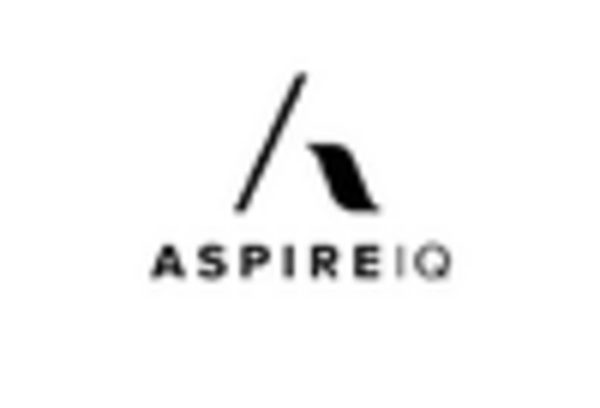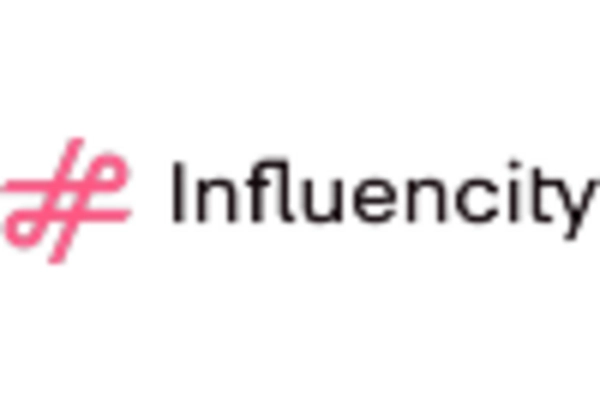Rise of Social Media Engagement
The influencer marketing market is experiencing a notable rise in social media engagement, which appears to be a driving force behind its growth. As of 2025, approximately 70% of consumers in the US report that they are influenced by social media when making purchasing decisions. This trend suggests that brands are increasingly leveraging influencers to enhance their visibility and credibility. The influencer marketing market is adapting to this shift by focusing on platforms that foster higher engagement rates, such as Instagram and TikTok. The ability of influencers to create authentic connections with their audience is likely to result in increased brand loyalty and customer retention, further propelling the market forward.
Regulatory Changes and Compliance
The influencer marketing market is currently navigating a landscape shaped by regulatory changes and compliance requirements. As the Federal Trade Commission (FTC) continues to enforce guidelines regarding transparency in influencer partnerships, brands must adapt their strategies accordingly. In 2025, compliance with these regulations is becoming increasingly critical, as failure to do so could result in significant penalties. This evolving regulatory environment suggests that the influencer marketing market is likely to see a shift towards more transparent and ethical marketing practices. Brands that prioritize compliance may enhance their reputation and build trust with consumers, ultimately contributing to the long-term sustainability of their influencer marketing efforts.
Emergence of Micro and Nano Influencers
The influencer marketing market is increasingly characterized by the emergence of micro and nano influencers, who are gaining traction among brands seeking authentic engagement. These influencers, typically with follower counts ranging from 1,000 to 100,000, often boast higher engagement rates compared to their macro counterparts. As of 2025, it is estimated that micro influencers account for nearly 50% of all influencer marketing campaigns in the US. This trend suggests that brands are prioritizing quality over quantity, as the influencer marketing market adapts to consumer preferences for relatable and trustworthy endorsements. The cost-effectiveness of collaborating with smaller influencers may also contribute to the growth of this segment, as brands can achieve substantial reach without exorbitant expenditures.
Technological Advancements in Analytics
The influencer marketing market is being transformed by technological advancements in analytics, which are enabling brands to measure the effectiveness of their campaigns with greater precision. In 2025, the integration of artificial intelligence and machine learning tools is becoming commonplace, allowing marketers to analyze consumer behavior and engagement metrics more effectively. This trend indicates that the influencer marketing market is moving towards data-driven decision-making, where insights gleaned from analytics can inform future strategies. As brands increasingly rely on these technologies, they may optimize their influencer partnerships, ensuring that their marketing efforts yield maximum impact and return on investment.
Increased Investment in Digital Advertising
The influencer marketing market is witnessing a surge in investment in digital advertising, which is likely to reshape the landscape of marketing strategies. In 2025, digital advertising spending in the US is projected to reach $200 billion, with a significant portion allocated to influencer partnerships. This trend indicates that brands are recognizing the value of influencer marketing as a cost-effective means to reach targeted demographics. The influencer marketing market is benefiting from this increased investment, as companies seek to maximize their return on investment through strategic collaborations with influencers. This financial commitment is expected to drive innovation and creativity within the market, leading to more engaging and effective campaigns.

















Leave a Comment